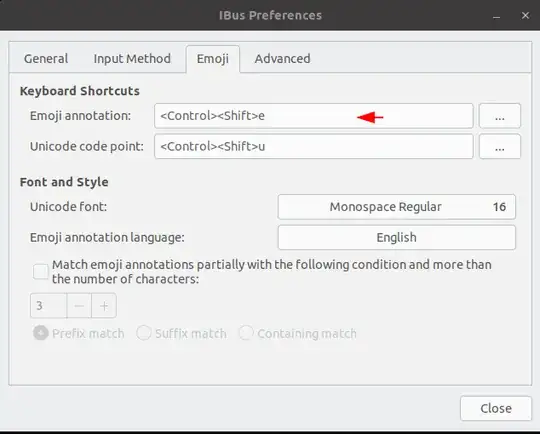I already knew that Ctrl+Shift+u would allow to type a character by giving its Unicode hexadecimal representation: an underlined u appears, you type the code and hit Enter.
For example, Ctrl+Shift+u; e; 9; Enter gives the character é.
Now I've just noticed that Ctrl+Shift+e lets an underline e appear, in a very similar manner, but I can't figure out what it does.
Does someone know? Thank you in advance.

